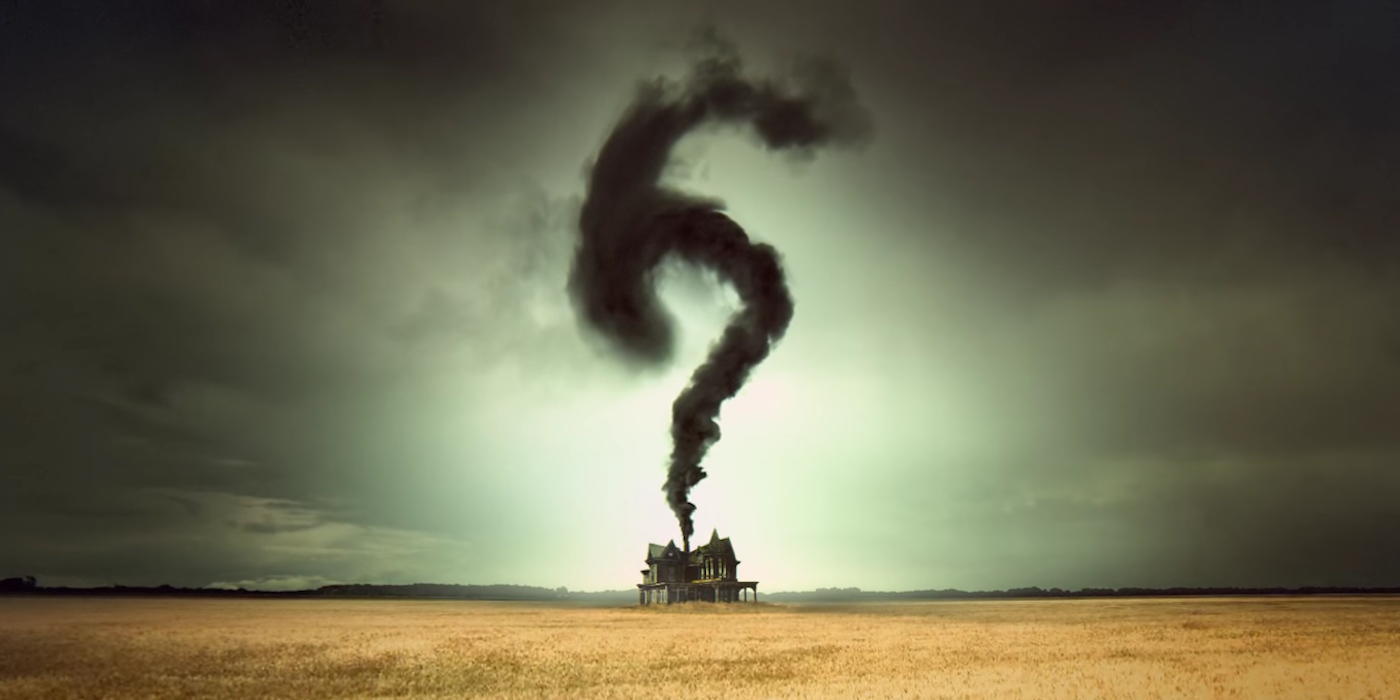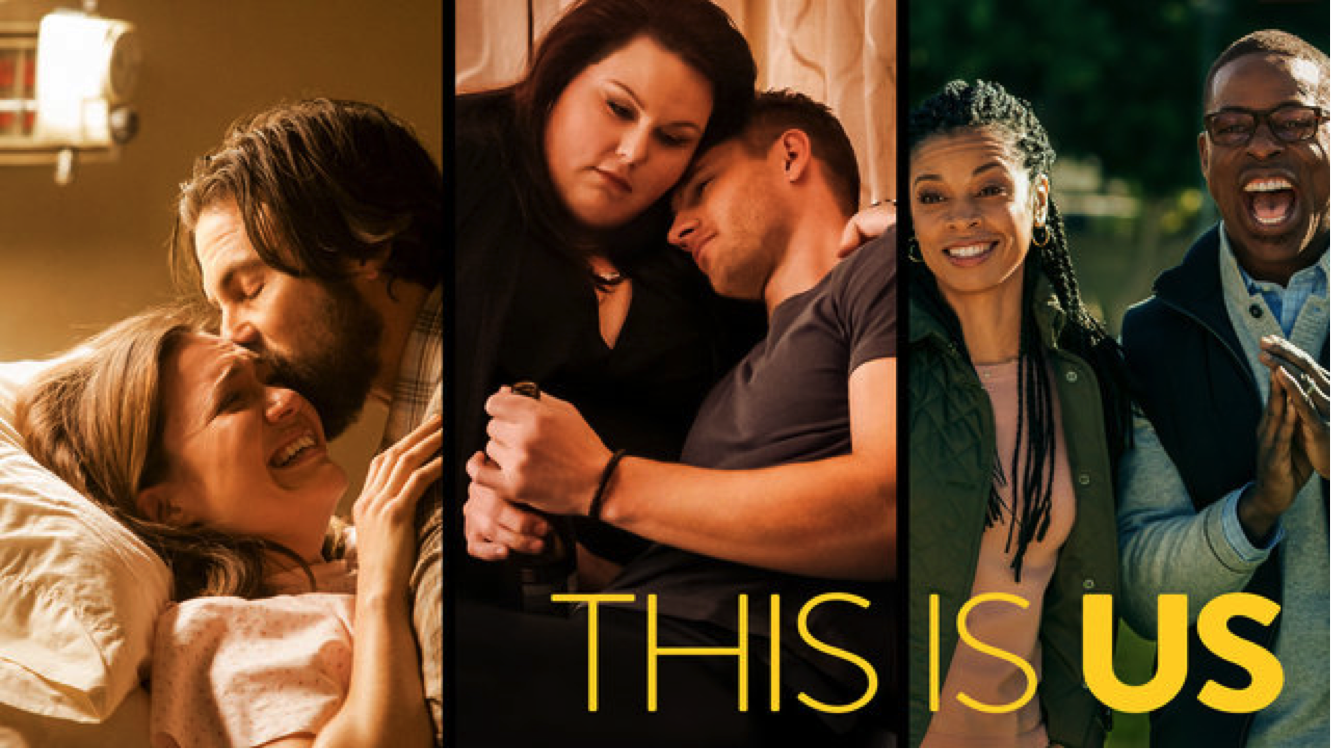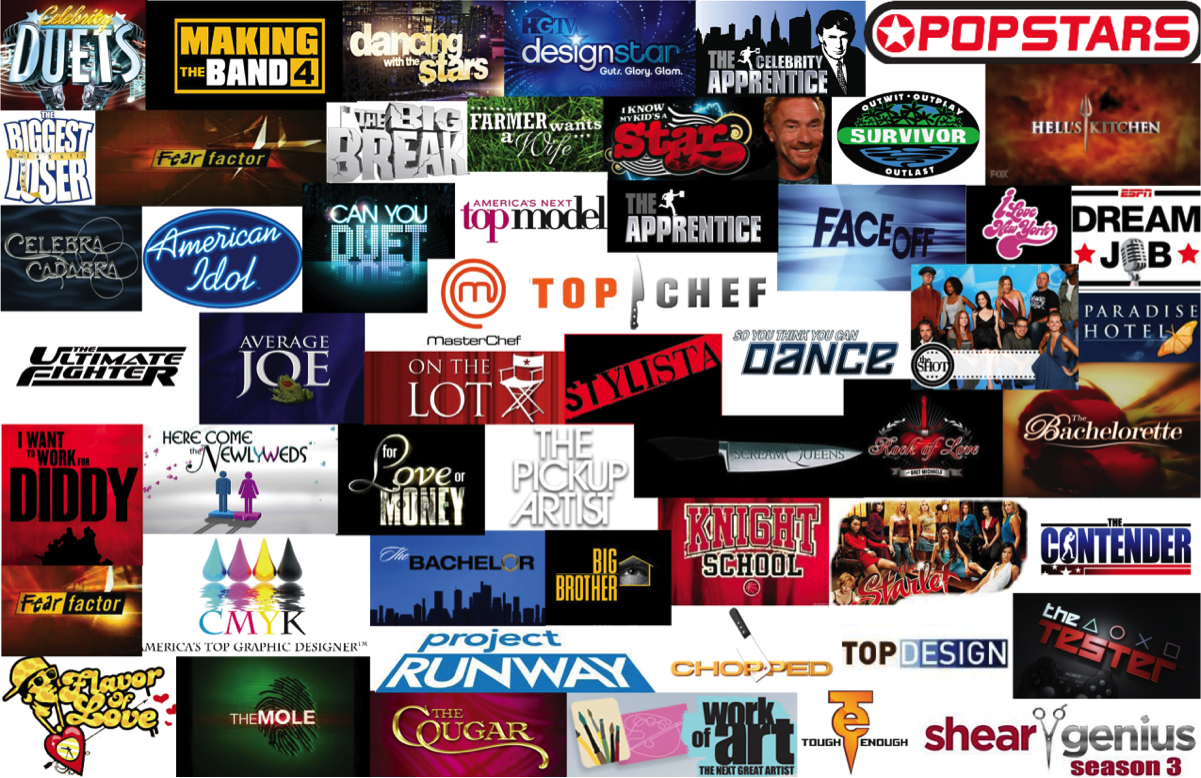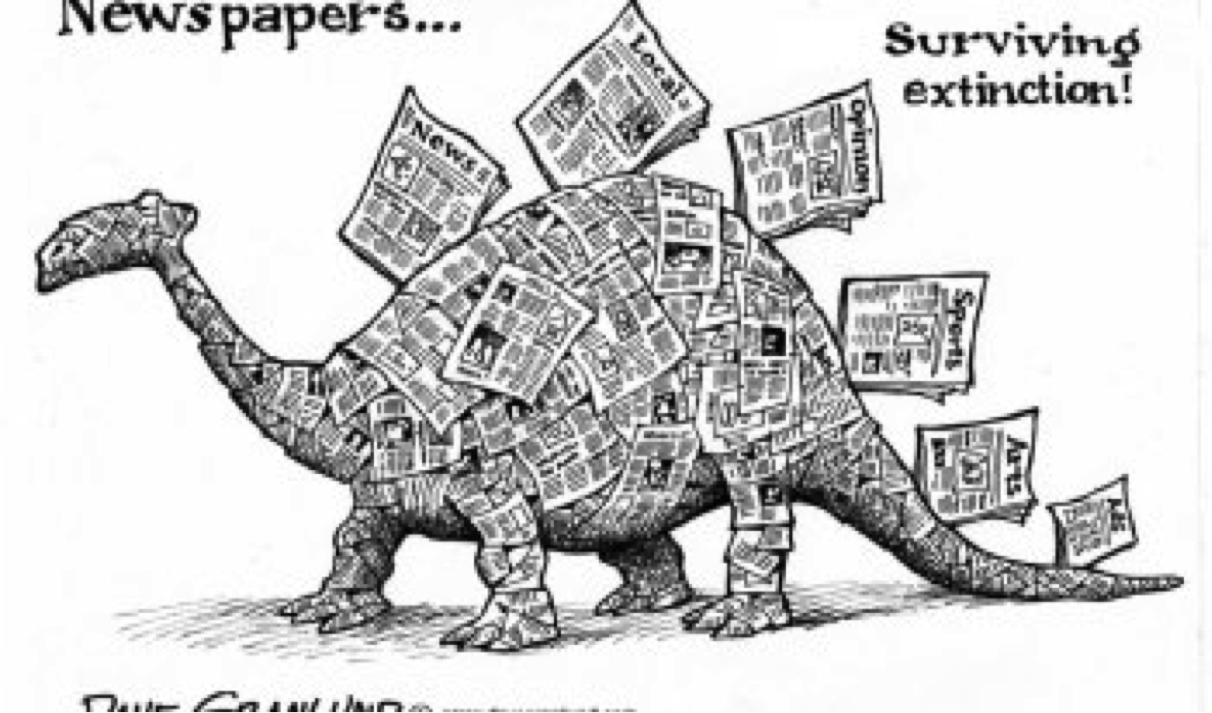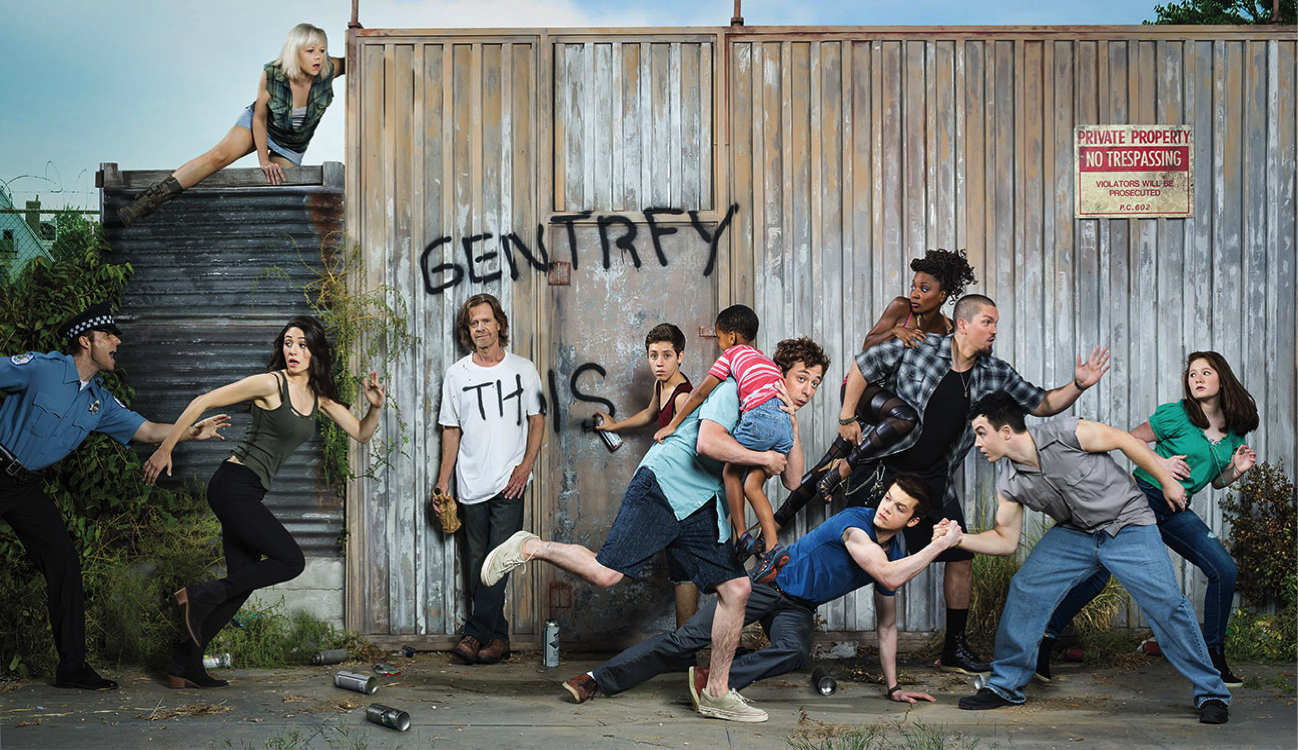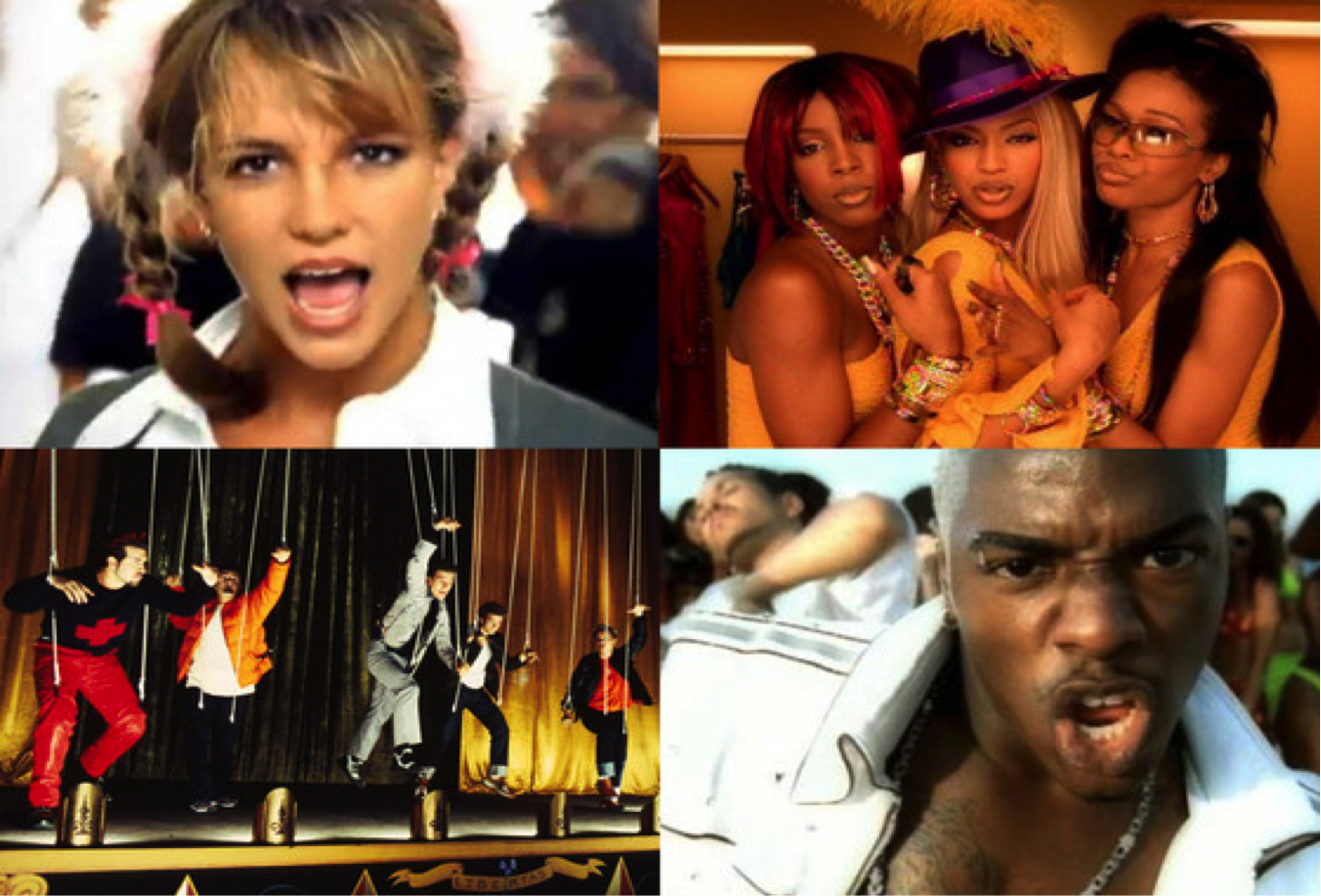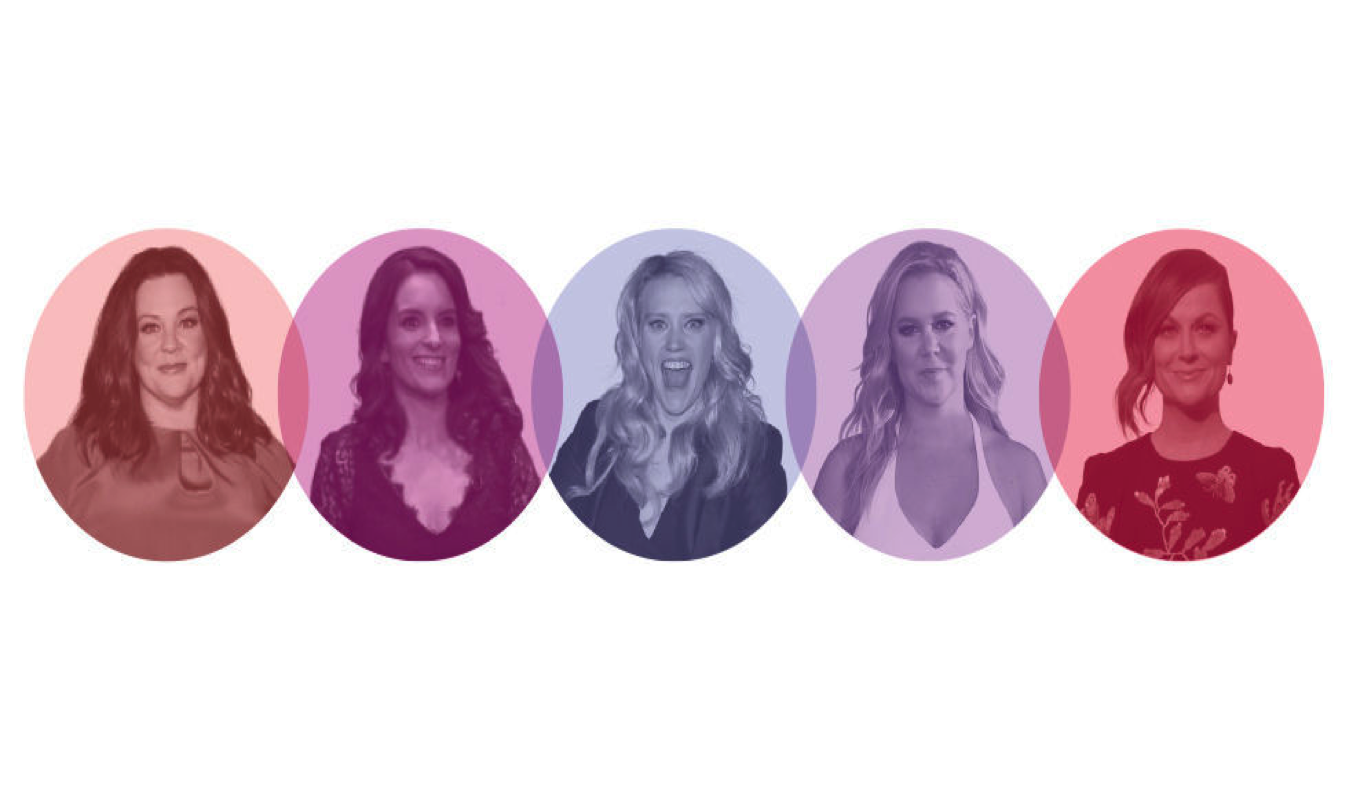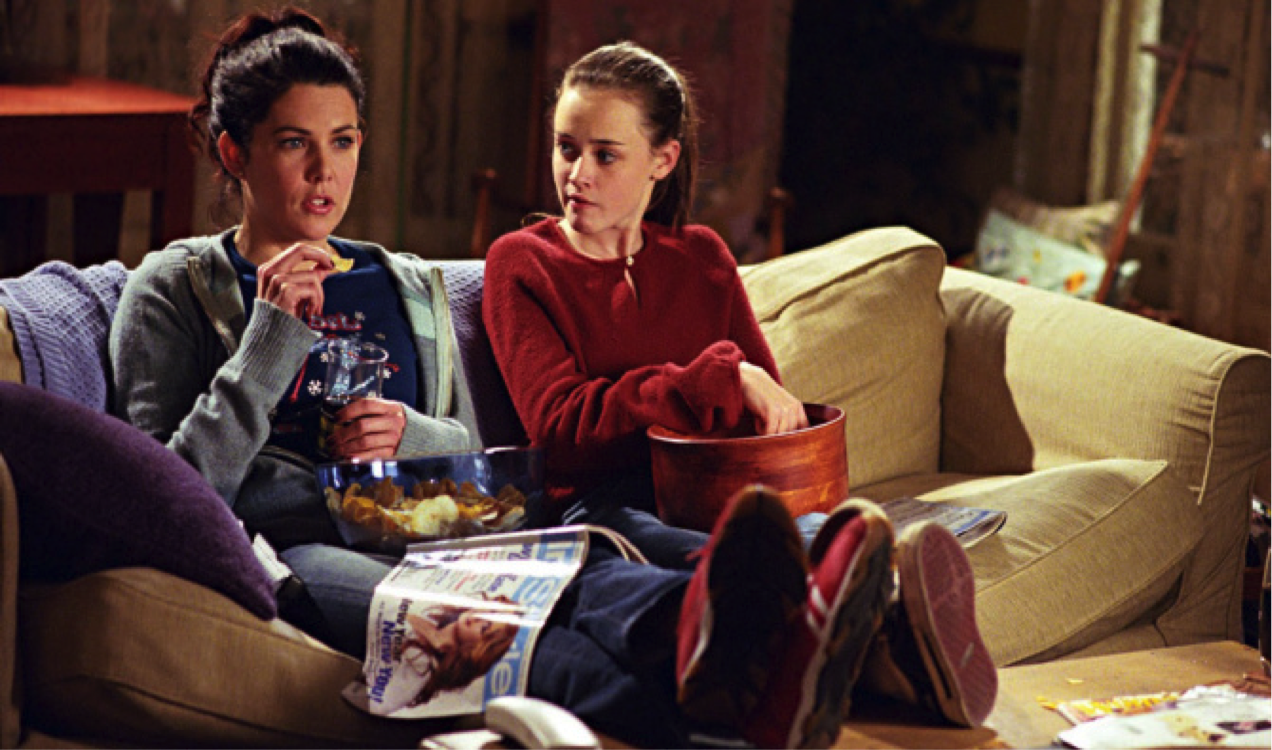American Horror Story Season 6 Poorly Executed
The new season of American Horror Story focuses on a Roanoke Theme. While an interesting plot concept, the execution of this season’s formatting and how the story is told is overbearing.
The story opens with characters in present day, speaking in front of a camera crew about their experience in the "roanoke” house. The set up of this story's structure seems planned out, a little too easily planned out. From the beginning, the characters are telling and recounting the scary events that happened to them, rather than showing these events. This idea appears out of the ordinary of the show's structure over the past 5 seasons.
[youtube id="3KUjpSNDlY4"]
The first 5 seasons of AHS showed, sometimes in disturbing detail, what the story was about in real time. It depicted the characters’ relationships with one another and their character arcs; it also showed their emotional journeys on their own and in relation to other characters. The psychological adventures that each season put the viewers through allowed us to have a detailed view of each story line; a story of what it looked like to be in the murder house, an insane asylum, in a coven, at a “freak" show in a circus, and in a (haunted) hotel. This was accomplished by characters through showing instead of telling the audience.
The beginning of season 6 narrates what happened to the victims of the roanoke house, followed by showing; which is a jarring idea. The episode flips back and forth between actress Lily Rabe and Sarah Paulson; both supposedly play the character of Shelby Miller. When I noticed this was also the case for the two male actors that played the roll of Matt, I made the connection. Like in most documentaries, stories are depicted by the retelling of what happened from the first person point of view and shown through actors reenacting these true life stories. However, in this case, it is confusing.
Usually, when re-telling a story in a documentary, it alternates between the retelling of these stories by the people that lived through them; this is supplemented in documentaries by short snippets of flashback scenes with actors who play the real life victims. However, these scenes of flashback using actors seemed overly real and detailed, compared to real documentaries. There was no need for both the interviewing of the “true life” survivors and the actors who showed this story. Considering that this is a television series, it seemed excessive here.
Showing these scenarios that make up the story using one set of characters would have been powerful enough to carry the story. It also could've refrained from confusing the audience/viewer.
There was a slow, natural progression of strange event leading up to attack on Shelby’s life, which was well planned. However, right after the attack occurred, the next moment cut to Matt narrating the scene; Matt (the actor) arrives home with police surrounding his house after Shelby’s attack. This then cuts to the aftermath, which also seems like an easy out. Their was a choice between showing how the attack unfolded or easily moving the story into the next scene. The route that is taken neglects Shelby’s thoughts and reactions after she had just been assaulted; it seems as if it were easier for the writer/s to cut to Matt’s reaction. This fails to allow Shelby to assess what just happened to herself.
Half way through the episode, Lee (Matt’s sister) enters the picture. This seems like a normal act, considering Lee is a cop and Matt wants Shelby to be protected. Yet, the flash of scenes showing Lee’s life events over the narrator’s voice, again, seemed too easy. Instead of showing a progression of these details throughout the story line, the writer gives them up too quickly. The scene focusing on Lee abruptly dives into Lee’s story, taking the viewer out of the current story at hand. It disrupts the flow of the story line. This, in turn, extinguishes the build-up and lowers the possible climax the story could have.
In this case, the documentary style of telling a story in past and present in a television show also spoils the ultimate question: the question of whether the character/s is going to live or die during the course of the episode or series. The fact that these characters are alive to re-tell their story means that we, the audience, know they will survive. No matter the actions taken by the perpetrator/s throughout the story line, they will live.
Showing these character arcs are during scenes of action and dialogue is essential and strengthens the story; instead of weakening the story by the simple re-telling of what happened. This plot line had the potential to be powerful standing on its own, without the addition of narration and retelling. All of the details that were told to us, the audience, could have easily been manufactured into scenes that shows what the characters thought and felt.
Overall, while the plot of the Roanoke theme is well formulated and even well executed in scenes, the re-telling of these events in a documentary-styled fashion draws the viewer out of the story and spoils a large piece of the story as well.
"This Is Us" Premiere Review (WARNING: Spoilers)
The television series This Is Us, shows 4 individuals that are born on the same day, celebrating their 36th birthdays. The story starts out and centers around 5 individuals: Jack, Rebecca, Kate, Kevin, and Randall.
[youtube id="rfUiKg28r_M"]
A couple of these individual's lives intersect directly with each other at first glance. Although they are all at the same age, they are facing different battles at 36. Jack and Rebecca are a married couple that are expecting triplets. Kate is an assistant and is struggling with food while attending an overweight support group. Kate’s brother, Kevin, is at a crossroads in his career; he doesn’t feel his current role as an actor is filling up to his career potential. Randall has established a family of his own, with a wife, 2 daughters, and adoptive parents. Yet, he feels he needs to find where he came from and is searching for his birth father.
All of these lives that are seemingly interconnected stories comes together in the end. It is revealed to the audience that they all belong to one family; Jack and Rebecca are the parents, Kate and Kevin are their biological children that survived the pregnancy, and Randall is the third adopted child.
Towards the end of the episode, when Kate is making this revelation, she repeats a quote from her father. “Do you remember what dad would say when ever something crappy happened to us?” Kate asked Kevin. There is emphasis here on the word US, both as triplets and as a family as a whole.
During the flashback to 1979, the delivery doctor breaks the news to Jack about his and Rebecca’s third child. But the doctor also shines profound light on the situation, based on his own past experiences. “There’s no lemons so sour that you can’t make something resembling lemonade,” the doctor says. This not only sets a hopeful tone. It also allows the character facing the situation to visualize this concept through the actions that they take. An example of this is shown through Jack and Rebecca by taking home 3 children that day. This goes back to what the doctor said when he first told Jack that only 2 children survived. “If you can take the sourest lemon that life has to offer and turn it into lemonade; then you will still be taking three babies home from this hospital. Maybe not the way you planned,” the doctor says.
Jack and Rebecca accept their role of being parents of three children. Even if the situation isn't what they anticipated. This action proves that family is stronger than biology. Family is support and unconditional love for one another. Interconnecting stories of “strangers” connects into a single family dynamic, with various character arcs and paths running through them. This provides room for the story to open up. It also allows us to see these individuals in a new light. It allows the audience to see the connection the characters have with one another in the past, present, and future settings. This is life.
Reality TV Shows "Real" or Scripted?
Why do we love to hate reality television? For the millennial generation, there seems to be an obsession with reality tv because this type of content is expanding largely; this increase includes a wide variety, ranging from competition to dating to family life drama. According to the Washington Post, there are currently over 300 reality television shows.
For decades, television games shows have made up the genre known as reality television. However, that genre would soon expand tenfold into a completely new concept of reality tv. The first reality television show began in 1970, titled “An American Family.” The show followed a family of 7, known as the Loud family. It chronicled their lives over a seven month period.
During the 1990s, MTV began its transition out of a strictly music video world of the 1980s and into reality television. Such shows include The Real World (1992) and The Challenge (1998), which are still on the air. This trend continued to increased drastically in the early 2000s. MTV was constantly creating new reality television shows during this time; from the Newlyweds: Nick and Jessica (2003), Laguna Beach (2004) and its spin-off The Hills (2006), My Super Sweet 16 (2005), and the list continues.
I remember watching so many of these shows when I was in high school. Partly if I had nothing else to do on a Saturday. Mostly because these programs were the majority of the content that aired on MTV. Whereas today, there is more of a selection with choosing what you want to watch from your computer; with programs like Netflix, Hulu, and network companies online sites that give you access to choose a show.
Yet, reality television still maintains its place as a preferred television genre today among the younger generations. Lets take a look at the numbers.
According to August 2015 records from statistic.com, the genre of reality/competition television programs ranked second most popular among the age group of 18 to 35 year olds. Deadline.com reported that Keeping Up With the Kardashians had increased in viewership from season 11. The Kardashians raked in a total of 3.2 million viewers during the season 12 premiere.
Tvline.com reported that in May 2016, The Bachelor ranked number 4 in the top reality show category, with a demographic of those ages 18 to 49. The Bachelor brought in 3 million viewers in its last season. Big Brother kicked off the season 18 premiere with 6.1 million viewers. Yet, despite this large viewership, tvline.com reported that this outcome was a 13% decrease from Big Brother season 17 premiere.
But how much of this is actually true. Does any or the majority of reality tv content use a type of script? In an article by bustle.com, Whitney Port of The Hills tv show reported to US Weekly in an interview that the show was not scripted. Yet, Port did confess that the production team did influence the cast to be more dramatic in certain situations. Port’s co-star, Kristin Cavallari, had a different opinion from her time on The Hills. Cavallari reported in a 2013 interview that the production team did influence what the cast said. “We never got an actual script, but they would text us what to say,” she stated.
The 2007 popular reality show Keeping Up With the Kardashians, has also faced allegations of some scripted and staged material. In an article posted by business insider, blogger Mariah Smith analyzes each episode of Keeping Up with the Kardashians to a painstakingly, meticulous degree. Smith matches the shows episodes with the Kardashians’ Instagram accounts in order to tell how scenes of Keeping Up With the Kardashians may be out of order and somewhat false.
What do you think? Are reality television shows completely staged and scripted, or “real”? Maybe these reality shows have some implements of scripted material and staged actions to them. Could this result be for the sake of what people in the television business view as entertainment? Let us know what you think in the comment section below.
Online Publication and The Newspaper Industry
Over the last 70 years, the ways in which we are informed about news and current events has changed drastically. With the invention of the television and the computer, how we are informed is also changing. Now, we spread information through the internet, a wildfire of tweets and shared blog posts and videos. Even the majority of well-known newspapers like the New York Time, the Chicago Tribune, and the L.A Times have all created websites that display their online articles.
In this world in which we are apart of and the societies in which we make up, there is knowledge all around us. This access to knowledge is growing tenfold with all of the material and tools we have at our finger tips.
However, it is essential for any and all publications to establish one major concept: credibility. Credibility is trusting what the reader is saying because they have established a sense of credibility with their audience. This is shown through using personal experiences, providing links to reputable sites, and refraining from the use of Wikipedia. These are just a few small examples of how to establish a writer as trustworthy in the online community.
Based on my own current experience from working in both an online publication as well as the newspaper industry, there will always be pros and cons to each side that the other side lacks. In the newspaper industry, local newspapers hold great value in the strong, personal relationship between the newspaper and the reader. You have a better sense of who is reading these articles because they're your family, your friends, and your neighbors. And there’s a comfort in that.
The first United States newspaper, the Boston News Letter, originated on April 24, 1704. This piece of media not only discusses events in history, it is history.
Although you can share articles with this same familial audience, there’s a crucial difference. The world of online publication is a two-way, communicative street. And as a writer, that can be intimidating. Complete strangers have the power to verbally abuse you, and many act on that capability.
Yet, there’s also a large sense of freedom in writing online. Self-starting, entrepreneurial bloggers do not have expectations to stay within a company’s tone or set material topics. They are their own company, their own brand. They are the creators.
Even the concept on online publication has a wider scope of freedom; publications in different topics of interest exist, from music to online magazines to home and lifestyle blogs. It’s an expansion of the newspaper, providing readers with a large variety and quantity of subjects and issues to dive into.
Whereas in the newspaper industry, you are in a co-dependent relationship with the assembly line of co-workers; each have their own stake in contributing towards making that week’s deadline in order to get the paper out. There’s a sense of team work and camaraderie there that can’t quite be duplicated in the online world of publication. It is important to preserve that communal bond of sharing local news. It is also important to maintain a plain field for evolution in this industry, without one platform pushing out the other.
Between 2003 and 2012, the print ad revenue in newspapers has decreased by more than 50%. Readership has also decreased between 10 and 20% over the last 15 years among all age groups; these age groups consist of individuals from the 18-24 year old bracket to ages 65 and older.
However, with this new age of online media and the rising generation of younger readers and creators, a question comes to mind. Can we still preserve the newspaper industry of both big booming companies like the Chicago Times along with smaller publications like Southtown Newspapers or Southwest Messenger Press? Could the extension of these papers onto online platforms help to sustain this powerful medium that has informed people around the world for hundreds of years? Maybe we need to start considering newspapers in both print and online form, rather than print vs online publications.
After 5 Years, Shameless Finally Hits Netflix
After over 5 years of being on the air, Showtime's series Shameless finally makes its way to Netflix.
In it, a family of six siblings who live on the South Side of Chicago, straddling the poverty line. The Gallaghers "head" of the family includes an alcoholic father (Frank) and a mentally ill, run away mother (Monica); this leaves the sibling, consisting of Fiona, Phillip (Lip), Ian, Debbie, Carl, and Liam, that are alone to fend for themselves. Everyday brings new challenges for this Back of the Yards based family. Each of the four older siblings has their own strengths that they bring to the table in order to put food on the table, maintain a livable household, and keep their family together. But with those strengths, comes weaknesses in each sibling.
No spoilers though, you’ll have to watch to find out these character arcs and relationships with one another. The question now arises: why this widely popular 2011 series is just hitting Netflix?
According to IMDB, Shameless has received average ratings of between an 8 and a 9 out of 10. And from season 1 to season 4, the ratings have only exponentially increased.
According to tvseriesfinale.com, Shameless’s viewership drastically rose from 1.36 million to 1.65 million between its second and third season. By its fourth season, Shameless was at an all-time hight with a season average of 1.71 million viewers. This decreased in the series’ fifth and sixth season, with season average ratings between 1.56 and 1.58 million viewers.
However, this doesn’t dismiss the fact that this popular comedy/drama gains so much attention because it feels real. Shameless is filled with real and raw scenes that evokes a strong sense of emotion in both the characters and the audience. Whether you are laughing or crying, these characters come together to form a genuine depiction of striving and struggling. The Gallaghers show how this familial bond is stronger together than apart. Whether they are battling these endeavors personally or collectively, Shameless demonstrates to the audience what “family is everything” really means.
Shameless should have been available on Netflix long before 2016 for long-time fans to binge watch; but we are grateful that fans new and old can enjoy such a phenomenal, almost tangible television show.
Pop Performers Era of the Late 1990s/Early 2000s
It was a time where pop demanded the attention of young teens, from boy bands to girls groups. Even powerful pop solo performers took center stage during this age. These performers styled baggy jumpsuits and performed coordinated dances that were largely popular in music videos that took over MTV. Let's take a look back at 6 throwback music videos from the late 90s/early 2000s that make us nostalgic:
“No Scrubs” by TLC —> The groups girl trio performed their music video “No Scrub” in true 1990s fashion. They wore baggy pants and platform shoes with synchronized dance movements in an intergalactic space atmosphere. Although the music video only received 40 million views on YouTube, this 1999 hit was the most played clip on MTV in May of 1999, according to Billboard. The music video performance for “No Scrubs” won several awards. Some of which included two Grammys, for best r&b song and best r&b performance. The TLC song also won an MTV music video award for best group.
https://www.youtube.com/watch?v=FrLequ6dUdM
“I Want it That Way” by The Backstreet Boys —> The 1990s started the memorable trend of pop boy bands, like N’Sync and the Backstreet Boys. In 2000, the Backstreet Boys released their hit “I Want it That Way.” Although the song displayed less of the classic boy band choreographed dance style compared to their song “Backstreets Back,” the boys still made some coordinated moves in a matching all white attire. The song was also up for numerous music award nominations.
https://www.youtube.com/watch?v=4fndeDfaWCg
“Baby One More Time” by Britney Spears —> This 1998 song features Britney Spears in a choreographed music video with multiple background dancers. In the music video first displayed all over tv screens on MTV, Spears goes from catholic school girl to hip hop girl. These planned out dance moves were a reoccurring theme in Spears’ videos. Over 10 years later, the music video of “Baby One More Time” was posted to YouTube. Since it was posted, the music video accumulated over 200 million views.
https://www.youtube.com/watch?v=C-u5WLJ9Yk4
”Bye Bye Bye” by N’Sync —> The well known boy band that monopolized the early 2000s, N’Sync, took over MTV in 2000 with their smash hit “Bye Bye Bye." With all five band members following in suit to every choreographed dance move, from hanging on strings like puppets to dancing on walls. N’Sync perfected the boy band image and dominated the game in 2000 with their “No Strings Attached” album. Their song “Bye Bye Bye” was also awarded for multiple MTV music videos. Some of the awards included the MTV video music award for: best choreography, best pop video, and the viewer’s choice award.
https://www.youtube.com/watch?v=Eo-KmOd3i7s
“Genie in a Bottle” by Christina Aguilera —> Aguilera first came into public recognition in the late 1990s with songs like “What A Girl Wants” and “Genie in a Bottle.” Christina Aguilera’s music video for “Genie in a Bottle” moves back and forth between “normal” seeming scenes in which Aguilera is hanging out with friends, to strongly choreographed dance scenes. Although the song didn’t receive any awards, the hit was featured on her self entitled album that led Christina to win a grammy for best new artist.
https://www.youtube.com/watch?v=kIDWgqDBNXA
“Survivor” by Destiny’s Child —> Before Beyonce went solo, she too was in a girl group known as Destiny’s Child. The fierce trio depicts their strength to survive and showcases powerful, coordinating dance moves in the music video. The group’s 2001 song “Survivor” was awarded for MTV video music award for best r&b video. The music video was also the recipient of many MTV nominations. According to Billboard, “Survivor” was reported as the second most played clip on MTV in March of 2001.
https://www.youtube.com/watch?v=Wmc8bQoL-J0
Although it is a bit of a cringeworthy period to look back on, these pop sensations represented a strange phenomenon in music history that many of us love to reminisce over. After growing up with Britney Spears and Justin Timberlake, it’s hard to simply forget all the words that we once memorized.
Feminism Taking A Stand in Comedy
There has always been a long-existing stigma surrounding funny women and women in comedy within our society. But why is it so surprising that women can be funny?
And why are male comedians who make light of subjects like rape and sexual abuse not given a second thought? Is it because our society views degrading behavior towards women as “just joking?” It isn’t “just joking.” And thankfully, the strong presence of feminist female comedians and their even stronger comedic style addresses these feminist issues.
Comedian Jessica Williams of "2 Dope Queens,” who also makes appearances on the Daily Show, expresses her pro-feminist comedic style; it shines light on the issues, while making the audience laugh. These are two separate entities, rather than taking these critical issues lightly through the crutch of comedy.
Jessica Williams also stated in an interview that she was a victim of sexually harassment, and by a famous actor; this shows how even a strong woman of color, not only in society but as a powerful woman in television, can be taken advantage of by a man. But it's William’s courage to share her story, rising against those men that feel they can control and silence women. But Jessica is one heroing example of women who stand up and fight.
Another feminist female comedian worth mentioning in this article is Emily Heller. Heller discusses feminism and feminist issues as a comedian. She talks about the cliches associated with feminists/feminism and the real issues. Heller presents these issues in a way that is funny but doesn’t take away from their value or make them less meaningful through the use of comedy.
One of the most recognizable female comedians in the past year, Amy Schumer, has also faced issues of slut-shaming in relation to comedy. In one interview with comedian and actress Amy Schumer, the male interviewer had the nerve to call Train Wreck "autobiographical." He then proceeds to say that Schumer’s performance in said movie portrays her as a “skank” and that it is a depictions of “the character of the movie.” Amy Schumer’s comedic style is hilarious. She uses her own personal experiences to poke fun at herself and make light of her insecurities. As a result, she make others laugh. The audience does not laugh at her expense, but at the delivery of her jokes. It makes us, the audience, look at ourselves and attempt to take our own insecurities as light-heartedly as Amy Schumer.
The presence of feminists comedians is not only existent in females, but also feminist male comedians. Comedians Seth Meyers and Jay Baruchel have said some of the strongest women they know are those they’ve worked with. Even Louis C.K. has addressed feminist issues in his comedy stand-up performances. “Globally and historically, we’re (men) the number one cause of injury and mayhem to women. You know what our number one threat is? Heart disease,” Louis C.K. said.
This joke addresses that there is a historically proven problem in which men treat women in our society; however, Louis C.K. has had seemingly mixed views on his feminist position, or at least in terms of those views he has outwardly expressed.
But some men in the public eye that consider themselves as feminists remain firm on their position as such. “I’m constantly annoyed by how terribly written most females are in most everything - and especially in comedy. Their anatomy seems to be the only defining aspect of their character, and I just find that untruthful and it straight up offends me. A lot of the strongest people I know are chicks. As a viewer, I get a kick out of watching actual women. And I like writing strong women. Because as a straight male, there’s nothing more attractive to me than a strong girl,” says comedian and actor Jay Baruchel.
It is men like Baruchel who not only recognize women's ability to be talented within the world of comedy; but also men who work alongside these strong females comedians, and treat them as such.
The Gilmore Girls Lives On!
Since 2000, fans of the series Gilmore Girls continue to fawn over the memorable show chalk full of pop culture references, wit, and the ups and downs of everyday life and relationships. The beloved series came to an unfortunate end in 2007.
Netflix has confirmed the resurfacing of the series in a 4 part story line as early as October of 2015. For month, Gilmore Girls enthusiasts have been obsessing with the biggest question that left us on the edge: when? When will the series air? Finally, Netflix officially confirms that the return of the Gilmore Girls will air on November 25th of this year.
Throughout the early 2000s, the Gilmore Girls’ ratings remained at a constant high for the majority of the series' lifetime. According to IMDB, the show ranges between an 8 and 9 out of 10. Although the final season’s ratings were lower than in past years, the ratings show a steep incline over the course of Lorelai and Rory’s last moments together. Throughout the seven season life span, Gilmore Girls accumulated an average of between 4 and 5 million viewers.
I remember rushing home from middle school and turning the channel to abc family; curled up in the little corner of my cozy bedroom with hot chocolate and blankets around me, I was ready for a full hour of Gilmore Girls. I was raised in a town where everyone knows everybody or is a friend of a friend; Gilmore Girls reminded me of my own home a bit. Whether it was passing by EPs local gazebo with strung lights after a snowfall, or my old babysitter and family friend who always reminded me a little of Lorelai Gilmore. Watching Gilmore Girls gave me that warm, familiar feeling. Growing up watching this show at a young age influenced my taste in music, my love for coffee and even my sense of humor. I still continue to re-live the series annually through the aid of Netflix.
Now, nearly 10 years later, the story continues. I am incredible excited to see the directors, producers, cast, and crew coming together to give the story it’s proper ending. The ending that was intended by the series creator Amy Sherman-Palladino before leaving the show after season 6. Sherman-Palladino has returned for the revival. We'll finally get to see how that chapter of the Gilmore Girls was meant to end, through the creator’s eyes.
[youtube id="fTnU5MG5Edw"]
Gilmore Girls is more than just a revival and resurfacing of a series. It’s a welcoming home of loved characters and well known places. And now, we get to see how those familiar components have evolved over the past 10 years. Hearing the well recognized tune of Sam Phillips’ voice in the background and getting a glimpse into Stars Hollow is like returning home for the holidays. It gives me great anticipation for November 25th, 2016.

